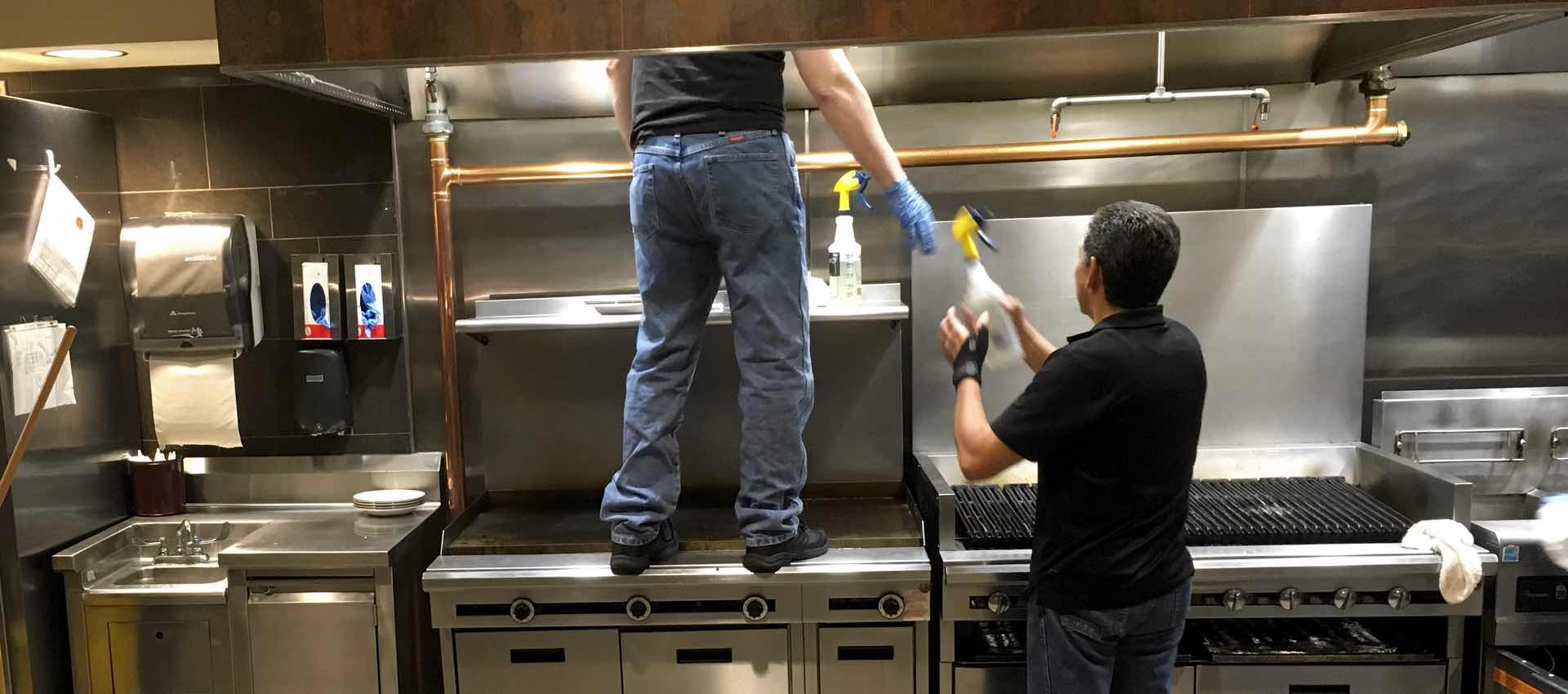In our industry, we’ve all witnessed an unfortunate on-the-job injury. In fact, millions of workplace injuries are reported each year, which can lead to costly medical bills, prolonged absences and workers’ compensation costs.
Kitchen exhaust hood cleaning crews have an undeniably dirty job, but given the environment in which these skilled technicians work, it’s a field that’s also rife with safety challenges, such as wet and greasy surfaces, elevated work areas, heavy equipment and hazardous chemicals.
As an exhaust system cleaning company, you should have in place safe work practices and hood cleaning safety initiatives to reduce injuries (and their associated costs) as well as to improve productivity, product quality and even strengthen team morale.
Here are some tips to help prevent potential accidents and injuries.
- Certify Your Business: The International Kitchen Exhaust Cleaning Association (IKECA) is a non-profit organization dedicated to preventing fires and ensuring the safety of kitchen exhaust professionals. IKECA offers internationally recognized certification programs that focus on the industry’s standards, including on-the job health and safety best practices.
- Clean Job Site Conditions: When it comes to safety, the condition of the job site is top priority. Remove all possible hazards and debris from the kitchen and surrounding areas. Be sure all cooking appliances are shut off and have cooled down
- Inspect Your Cleaning Equipment: Ensure everything from the pressure washer to the extension ladder is in tip-top shape and free of potential hazards like cracks and splits, or loose bolts and rivets.
- Dress The Part: Cleaning a commercial vent hood system requires specific equipment and protective gear for the dirty and hazardous task at hand. Each cleaning crew should be outfitted with slip-resistant shoes, heat and chemical-resistant gloves, goggles, face masks and potentially protective suits depending on the chemicals being used.
A safe work site depends on the cooperation of all involved, but with some planning and attention to detail, you can establish a routine that works for you and your business. Most importantly, your efficient safety program needs to ultimately provide employees and customers with a cleaner and safer environment.




